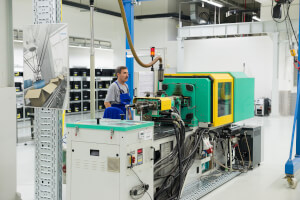A Comprehensive Guide to Polyethylene (PE): Structure, Properties, and Applications

Polyethylene (PE): Structure, Properties, and Applications
What is Polyethylene (PE)?
Polyethylene (PE) is one of the most widely used thermoplastics globally, known for its versatility, durability, and low cost. It is a polymer made from ethylene, a hydrocarbon derived from petroleum or natural gas. PE is synthesized through the polymerization of ethylene monomers, resulting in a long chain of repeating units (–CH₂–CH₂–). The simplicity of its chemical structure gives polyethylene its unique properties, making it suitable for a wide range of applications.
Polyethylene is categorized into several types based on its density and branching, which influence its physical properties and industrial applications.
Structure of Polyethylene (PE)
Polyethylene's structure consists of long chains of carbon atoms, each bonded to two hydrogen atoms (–CH₂–). The key to its versatility lies in its ability to form various molecular configurations, leading to different types of polyethylene with distinct properties:
- Low-Density Polyethylene (LDPE)
- LDPE has a highly branched molecular structure, resulting in a material that is less dense, more flexible, and has a lower melting point than other types of PE. This makes LDPE ideal for applications requiring flexibility and transparency.
- High-Density Polyethylene (HDPE)
- HDPE has a linear structure with minimal branching, leading to a more densely packed material. HDPE is stronger, more rigid, and has a higher melting point compared to LDPE, making it suitable for more robust applications.
- Linear Low-Density Polyethylene (LLDPE)
- LLDPE combines the properties of LDPE and HDPE. It has a linear structure with short, uniform branches, offering a balance between strength, flexibility, and impact resistance.
- Ultra-High-Molecular-Weight Polyethylene (UHMWPE)
- UHMWPE has extremely long chains, resulting in a material with exceptional strength, toughness, and wear resistance. It is used in high-performance applications where durability is critical.
Properties of Polyethylene (PE)
Polyethylene's properties vary depending on its type, but some general characteristics include:
- Chemical Resistance
- Polyethylene is resistant to a wide range of chemicals, including acids, alkalis, and organic solvents. This makes it suitable for use in containers, pipes, and chemical processing equipment.
- Low Water Absorption
- PE absorbs very little water, making it an ideal material for applications where moisture resistance is essential, such as in packaging and piping.
- Electrical Insulation
- Polyethylene is an excellent electrical insulator, which is why it is widely used in the production of cables and wires.
- Impact Resistance
- PE materials, particularly HDPE and UHMWPE, exhibit excellent impact resistance, making them suitable for applications where toughness is required.
- Flexibility
- LDPE and LLDPE are known for their flexibility, which is why they are commonly used in films, bags, and flexible containers.
- Durability
- PE is highly durable and resistant to environmental stress, including UV radiation, which extends its lifespan in outdoor applications.
Applications of Polyethylene (PE)
Polyethylene's unique properties make it suitable for a wide range of applications across various industries:
- Packaging
- Plastic Bags: LDPE is commonly used to manufacture grocery bags, produce bags, and trash bags due to its flexibility and strength.
- Bottles: HDPE is widely used in the production of milk jugs, detergent bottles, and shampoo bottles due to its rigidity and durability.
- Stretch and Shrink Films: LLDPE is used in stretch and shrink films for packaging, offering flexibility and puncture resistance.
- Construction
- Pipes and Fittings: HDPE is used in the production of pipes and fittings for water supply, gas distribution, and sewage systems due to its corrosion resistance and durability.
- Geosynthetics: HDPE is also used in geosynthetic products like liners and membranes for landfills, ponds, and reservoirs.
- Medical
- Prosthetics: UHMWPE is used in medical prosthetics, such as joint replacements, due to its high wear resistance and biocompatibility.
- Medical Packaging: LDPE and HDPE are used in medical packaging, including pharmaceutical bottles and blister packs.
- Consumer Goods
- Toys: PE is used in the production of various toys due to its safety, durability, and flexibility.
- Household Containers: LDPE and HDPE are used in a variety of household containers, such as food storage containers and laundry baskets.
- Agriculture
- Greenhouse Films: LDPE is used in the production of greenhouse films, providing UV protection and flexibility.
- Irrigation Pipes: HDPE is used in irrigation systems due to its resistance to chemicals and environmental stress.
Industries That Use Polyethylene (PE)
Polyethylene's versatility makes it an essential material in numerous industries, including:
- Packaging Industry
- PE is the most commonly used plastic in the packaging industry, accounting for a significant portion of all packaging materials, including films, bags, and containers.
- Construction Industry
- In construction, PE is used in pipes, fittings, insulation, and protective membranes, offering durability and resistance to environmental factors.
- Healthcare Industry
- PE plays a vital role in healthcare, used in medical devices, prosthetics, packaging, and disposable items like gloves and syringes.
- Agriculture Industry
- The agriculture industry relies on PE for greenhouse films, irrigation pipes, and storage containers, benefiting from its durability and resistance to chemicals and moisture.
- Automotive Industry
- PE is used in the automotive industry for producing fuel tanks, fluid containers, and protective linings, thanks to its impact resistance and chemical stability.
Examples of Polyethylene (PE) Applications
Some common examples of Polyethylene applications include:
- Milk Jugs (HDPE)
- Widely used in the production of milk jugs due to its strength, rigidity, and food-safe properties.
- Plastic Wrap (LDPE/LLDPE)
- Commonly used in food packaging to keep food fresh, offering flexibility and moisture resistance.
- Artificial Joints (UHMWPE)
- Used in joint replacement surgeries due to its biocompatibility and high wear resistance.
- Water Pipes (HDPE)
- Used in municipal water systems for its corrosion resistance and ability to withstand environmental stress.
- Trash Bags (LDPE)
- LDPE's flexibility and strength make it ideal for manufacturing trash bags, which need to be durable and resistant to tearing.
Historical Aspects of Polyethylene (PE)
- 1933: Polyethylene was first synthesized by accident by two British chemists, Eric Fawcett and Reginald Gibson, while experimenting with high-pressure reactions. This discovery laid the foundation for the commercialization of PE.
- 1950s: The development of Ziegler-Natta catalysts revolutionized polyethylene production, enabling the creation of high-density polyethylene (HDPE) and making the material widely available for commercial use.
- 1960s: Polyethylene became the world's most produced plastic, thanks to its versatility and cost-effectiveness, with applications ranging from packaging to industrial components.
- Today: Polyethylene continues to be a critical material in modern manufacturing, with ongoing innovations enhancing its properties and expanding its applications in various industries.
Conclusion
Polyethylene (PE) is a versatile, durable, and cost-effective thermoplastic that plays an essential role in modern manufacturing. Its wide range of properties, including chemical resistance, flexibility, and impact resistance, makes it suitable for numerous applications across diverse industries. Whether in packaging, construction, healthcare, or agriculture, polyethylene's ability to meet the demands of various applications ensures its continued relevance and importance in the global market.
Understanding the different types of polyethylene, their properties, and their applications can help manufacturers, designers, and engineers select the right material for their specific needs. As innovation continues to drive advancements in PE technology, its role in sustainable and efficient manufacturing processes will only grow.


